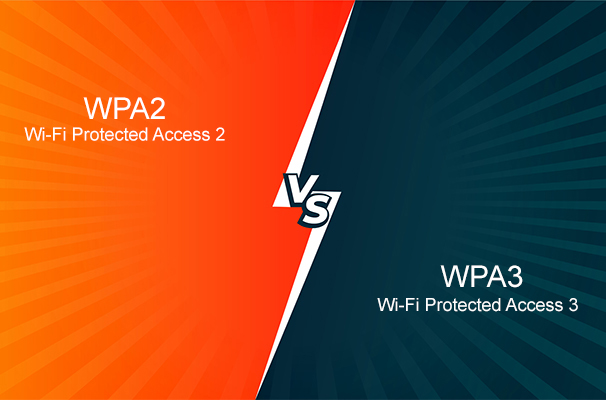In the digital age, choosing between a laptop and a notebook can be perplexing, especially as these terms are often used interchangeably. Both devices offer portability and convenience, but they cater to different needs and use cases. This guide will delve into the differences between laptops and notebooks, helping you understand their unique features and decide which one suits your requirements.
Definitions of Laptop and Notebook
Laptop
A laptop, also known as a laptop computer, is a portable personal computer designed to perform all the functions of a desktop. Weighing between 4 to 8 pounds (2 to 4 kilograms), laptops balance portability with powerful performance, making them suitable for both personal and professional use. They are equipped with comprehensive hardware, including larger screens, and full-sized keyboards, and often feature DVD drives and multiple peripheral options.
Notebook
A notebook, or notebook computer, is a lighter and more compact version of a laptop. Weighing less than 5 pounds and often mimicking the size of a paper notebook, notebooks are designed for ease of mobility and simple tasks. They generally have fewer hardware capabilities compared to laptops, making them ideal for basic computing needs like web browsing, document creation, and multimedia consumption.
Key Differences Between Laptop and Notebook
| Feature | Laptop | Notebook |
| Size | Typically 10 to 20 inches in screen size | Usually 15 inches or less in screen size |
| Weight | Weighs between 4 to 8 pounds | Weighs less than 5 pounds |
| Portability | More portable than desktops but bulkier than notebooks | Extremely portable, can easily fit into backpacks and briefcases |
| Cooling System | Includes fans and other cooling systems | Generally lacks robust cooling systems due to lower processing power |
| DVD Drive | Often includes an optical drive or DVD drive | Typically does not have a built-in optical drive |
| Hardware | Stronger hardware, suitable for intensive tasks | Simpler hardware, not suited for heavy computing tasks |
| Performance | Higher processing power, suitable for multitasking and high-performance applications | Lower processing power, designed for lighter tasks |
| Usage | Can replace desktop computers, suitable for heavy tasks and multimedia | Ideal for personal tasks, web browsing, and light presentations |
| Cost | Ranges from $150 to over $2500 | Generally between $150 and $400 |
Detailed Comparisons Between Laptop and Notebook
1. Size and Weight
Laptops are available in a range of sizes, from 10-inch ultraportables to 20-inch desktop replacements. They generally weigh more due to the larger screens and additional components. In contrast, notebooks are designed to be extremely light and portable, with screen sizes up to 15 inches and a weight that often does not exceed 5 pounds.
2. Portability
Both laptops and notebooks are designed for mobility. However, notebooks excel in portability due to their lighter weight and smaller size. They are ideal for frequent travelers or users who need a computer that can be carried easily throughout the day.
3. Performance and Hardware
Laptops are built to handle more intensive tasks, equipped with robust hardware including higher RAM and storage capacities, powerful CPUs, and dedicated GPUs in some models. This makes them suitable for gaming, graphic design, video editing, and other resource-heavy applications.
Notebooks, on the other hand, come with less powerful hardware. They typically feature less RAM and smaller storage capacities, making them more suited for lighter tasks such as browsing the web, working with documents, and streaming media. They are not designed for high-performance applications.
4. Cooling Systems
Laptops often include advanced cooling systems to manage the heat generated by their powerful hardware. This can include multiple fans and heat sinks. Notebooks, due to their lower processing power, do not require such extensive cooling mechanisms and typically have more basic cooling solutions or rely on passive cooling.
5. Optical Drives and Peripherals
Laptops often come with built-in optical drives (DVD/CD), which can be useful for media playback and software installation. They also provide multiple ports for peripherals such as USB devices, external monitors, and keyboards. Notebooks usually forgo these features to maintain their slim profiles and lower weight.
6. Cost
The cost of laptops and notebooks can vary significantly based on their specifications and intended use. Laptops, especially those with high-end specifications, can be quite expensive, ranging from $150 to over $2500. Notebooks are generally more affordable, with prices typically between $150 and $400, though high-end models can be pricier.
7. Usage Scenarios
Laptops are versatile and can serve as primary computing devices for many users, capable of handling a wide range of applications from office work to gaming. Notebooks, however, are better suited for users who prioritize portability and simplicity over high performance. They are ideal for students, casual users, and professionals who need a lightweight device for basic tasks.
Similarities Between Laptops and Notebooks
Despite their differences, laptops and notebooks share several similarities:
- Portability: Both are designed to be portable, offering a convenient alternative to desktop computers.
- Battery-Powered: Both devices can operate on battery power, providing mobility and flexibility.
- Digital Workspaces: They emulate desktop environments, allowing users to perform a variety of computing tasks.
- Connectivity: Both devices typically come equipped with Wi-Fi, Bluetooth, and USB ports for connectivity.
Choosing the Right Device
When deciding between a laptop and a notebook, consider the following factors:
- Purpose: If you need a device for heavy computing tasks such as video editing, gaming, or running complex software, a laptop is the better choice. If you need a device primarily for browsing, word processing, and light tasks, a notebook should suffice.
- Portability: If you frequently travel or need a highly portable device, a notebook’s lighter weight and smaller size make it ideal.
- Budget: Notebooks are generally more affordable. If budget constraints are a concern, a notebook offers basic computing functionalities at a lower price.
- Performance Needs: Consider the level of performance you require. Laptops offer higher performance but at the cost of increased weight and size.
Frequently Asked Questions About Laptop and Notebook
Why do some manufacturers label their devices as notebooks instead of laptops?
Often, it’s a marketing choice. Notebooks tend to imply a more lightweight and compact design, while laptops might suggest a more robust feature set. However, as technology evolves, the distinction becomes blurrier.
Is it easier to upgrade hardware components in a laptop compared to a notebook?
Typically, laptops offer more flexibility for upgrades (like RAM or storage) compared to notebooks, which might have more integrated components due to their compact design.
Can notebooks handle demanding software applications like graphic design tools or video editing software?
While some high-end notebooks can manage such tasks, laptops are generally better suited for heavy-duty applications due to their superior processing power and cooling systems.
Are notebooks more durable than laptops given their lightweight nature?
Not necessarily. Durability depends on build quality, materials used, and design. Some notebooks might be more fragile due to their thinness, while others are built with ruggedness in mind.
Why do Apple’s Mac series laptops seem to defy the typical price range of PC laptops?
Apple’s Mac laptops often incorporate proprietary technology, unique design elements, and a distinct operating system, which can drive up costs. Additionally, the brand positioning of Apple products typically places them in a premium segment.
Final Verdict
Laptop and notebook cater to different segments of users, each offering distinct advantages. Laptops provide the power and versatility needed for demanding tasks and can replace desktop computers for many users. Notebooks, with their emphasis on portability and simplicity, are perfect for users needing a lightweight and affordable device for everyday tasks. Understanding these differences helps in making an informed decision that aligns with your specific needs and preferences.





